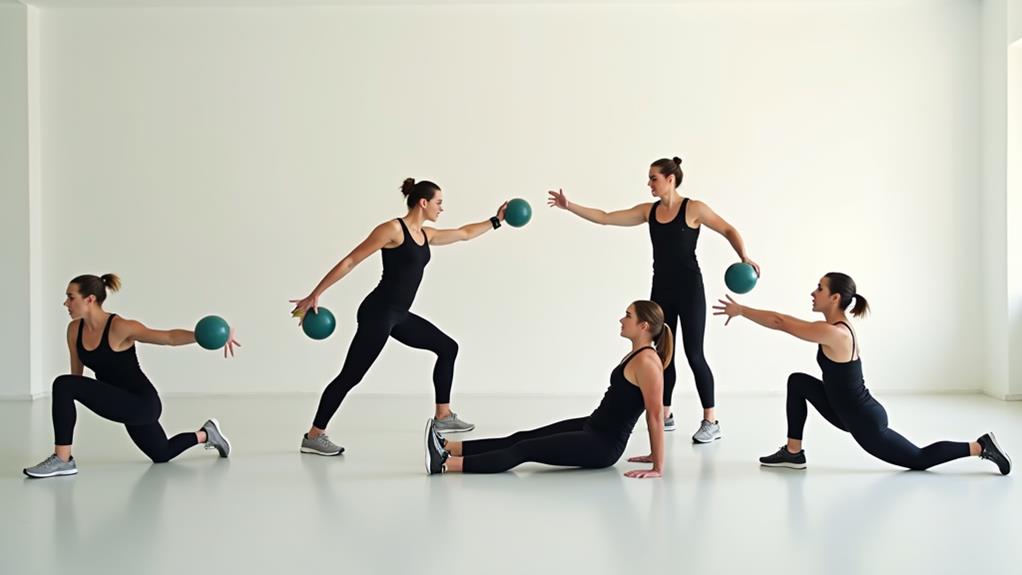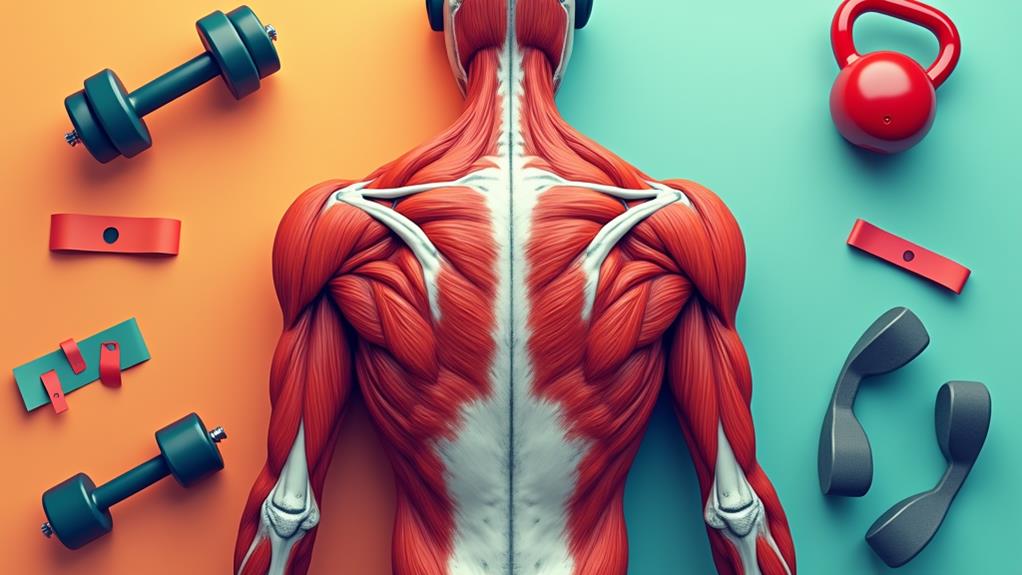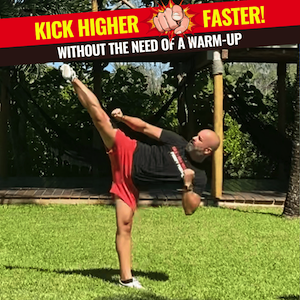As a martial artist, you're prone to shoulder injuries from repetitive overhead movements and high-impact activities. To heal and prevent future injuries, you'll need to progress through three phases of rehabilitation, starting with gentle movements like pendulum swings and tabletop slides. You'll then incorporate activation exercises and advanced strengthening techniques to restore range of motion and build shoulder strength. Managing pain and progression is essential, and community support can enhance your recovery. By committing to a structured rehab plan, you'll be on your way to a strong and healthy return to your sport – and that's just the beginning.
Understanding Shoulder Injuries
Facing a high risk of injury due to repetitive overhead movements and high-impact activities, martial artists need to be aware of the common shoulder conditions that can sideline them.
You're likely to experience shoulder pain at some point, as approximately 70% of adults do, making it crucial to understand the risks and prevention strategies associated with shoulder injuries.
Rotator cuff tears and shoulder impingement are particularly common among martial artists, often resulting from overuse and poor technique.
Shoulder tendonitis is another condition that can arise from overuse, leading to inflammation of the shoulder tendons.
To recover from these injuries, you'll need to engage in targeted rehabilitation exercises.
It's important to address shoulder injuries promptly, as mismanagement can lead to chronic pain and prolonged recovery times.
By understanding the causes and consequences of shoulder injuries, you can take proactive steps to prevent them and guarantee a swift recovery if you do get injured.
Consult with a healthcare professional to determine the best course of action for your specific injury and develop a rehabilitation plan that suits your needs.
Phases of Shoulder Rehabilitation
Recovering from a shoulder injury requires a structured approach, which is why shoulder rehabilitation typically involves three progressive phases.
You'll start with Phase One, where you'll focus on gentle movements like pendulum arm swings and tabletop arm slides to increase blood flow and shoulder mobility without causing discomfort.
Don't worry if you feel like you're not doing much – these exercises are designed to get your shoulder moving again without putting too much strain on it.
As you progress, you'll move on to Phase Two, where you'll use your body to prepare your shoulder for more intensive work through activation exercises like arm biking and resistance band rotations.
In Phase Three, you'll take it up a notch with advanced strengthening exercises that you'll do three times a week.
These will help you build endurance and overall shoulder health through dynamic movements.
Remember to keep up with ongoing mobility work every 3-4 hours, even after you've finished rehab, to maintain shoulder health and prevent future injuries.
If you go back to your old routine without maintaining your shoulder health, you may end up injuring yourself again next time.
Stay consistent and use your body wisely to guarantee a full recovery.
Essential Shoulder Mobility Exercises

Your journey to healing shoulders requires a solid foundation of mobility exercises to restore range of motion and prevent future injuries.
You'll want to focus on exercises that promote flexibility, reduce stiffness, and increase blood flow. Start with pendulum arm swings, allowing your arm to dangle and move gently. This exercise will help loosen up your shoulder joint and get your blood flowing.
Next, incorporate bent shoulder rows into your routine. This exercise engages your shoulder blades and helps strengthen your upper back, improving your posture in the process.
The tabletop arm slide exercise is another vital movement, enhancing rotational movement in your shoulder and aiding in the recovery of range of motion.
Don't forget to include internal and external rotation exercises using a pole, which provide guided movement and help stabilize your shoulder joint.
Regularly performing these mobility exercises will considerably contribute to your overall shoulder health and functionality, which is especially important for martial artists who rely on shoulder strength and flexibility.
Building Shoulder Strength Safely
Now that you've established a solid foundation of mobility exercises, it's time to build on that progress by developing shoulder strength. To do this safely, you'll start with activation exercises that enhance blood flow and joint function.
Using resistance bands, you'll perform internal and external rotations to develop foundational strength while minimizing the risk of injury. These exercises will help you build a strong foundation for more intense activities.
As you progress, proper form and technique are critical to prevent further injury. You'll focus on lighter weights initially to master movement patterns, and you'll perform exercises at least three times a week to build endurance and stability in your shoulder muscles.
Don't forget to incorporate mobility work into your daily routine, ideally every 3-4 hours, to maintain shoulder health and prevent stiffness. By following this approach, you'll be able to build shoulder strength safely and effectively, paving the way for a successful rehabilitation and a return to your martial arts training.
Regular mobility work and proper exercise form will remain essential throughout your rehab journey.
Advanced Strengthening Techniques

As you advance in your shoulder rehabilitation, it's essential to incorporate more challenging exercises to further develop strength and stability in your shoulder muscles.
You'll focus on exercises like D2 flexion and extension, which enhance your shoulder's functional range and stability. Aim to perform these exercises three times a week for ideal results.
You'll also incorporate active dynamic internal and external rotation exercises using resistance bands to improve shoulder strength and muscle endurance. This is especially important for martial artists, as it helps you withstand the rigors of intense training.
Additionally, you'll prioritize serratus activation exercises to maintain shoulder blade stability and prevent injuries.
To see consistent progress, combine these advanced strengthening techniques with mobility work every 3-4 hours. This guarantees long-term shoulder health and performance enhancement.
As you progress, you'll notice significant improvements in your shoulder's overall strength and resilience. By committing to these advanced exercises, you'll be better equipped to handle the demands of martial arts training and competition.
Equipment for Enhanced Rehab
Enhancing your rehabilitation routine with specialized equipment can considerably impact your recovery progress. You can take your shoulder rehab to the next level by incorporating tools designed to target specific aspects of your recovery.
Utilize rebounders to enhance dynamic movements, improving your overall functional strength and coordination. This will help you regain the ability to perform complex movements required in martial arts.
You'll also benefit from using weighted medicine balls, which allow for targeted strength training and increase resistance in your shoulder exercises.
Resistance bands are another vital tool, providing adjustable tension for internal and external rotation exercises that build strength while minimizing strain on your shoulder.
Don't forget to incorporate foam rollers to aid in muscle recovery and myofascial release, promoting flexibility and reducing tightness in the shoulder region.
Stability balls can also be used for various exercises to improve your core strength and shoulder stability, essential for martial artists returning to their practice after shoulder injuries.
Importance of Community Support

Surrounded by others who understand the challenges of shoulder rehabilitation, you'll find that community support plays an essential role in your recovery.
You'll achieve better results when you engage with others facing similar challenges, as community support boosts motivation and accountability.
Participating in group rehabilitation sessions or martial arts classes can improve your adherence to exercise routines.
Studies show that social support not only motivates you but also reduces dropout rates.
Managing Pain and Progression
You've established a support network and are now actively participating in group rehabilitation sessions or martial arts classes, which is helping you stay motivated and accountable throughout your recovery.
As you progress, it's crucial to monitor your pain levels during exercises. If you experience discomfort, it may be a sign that you need to modify your routine or slow down your progression. You should aim to increase the intensity and frequency of your workouts gradually, ideally to three times a week, to build endurance and strength while managing pain effectively.
Incorporating gentle mobility exercises, such as pendulum arm swings, can help increase blood flow and reduce pain before progressing to more intensive activation exercises.
You can also utilize resistance bands for internal and external rotation exercises to build shoulder strength while minimizing the risk of exacerbating pain. Regular consultations with your healthcare provider will verify that your pain management strategies are effective and that your progression is safe.
Long-term Shoulder Health Strategies

Three to four hours may seem like a short window, but incorporating mobility exercises at this frequency can make a significant difference in maintaining shoulder flexibility and preventing stiffness during your recovery. Regular strengthening activities, such as dynamic internal and external rotations, are also vital for building endurance and stability in your shoulder muscles. Aim to do these exercises at least three times a week.
| Exercise | Frequency |
|---|---|
| Mobility exercises | Every 3-4 hours |
| Strengthening activities | At least 3 times a week |
| Assessment and consultation | Regularly, as needed |
Utilizing equipment like resistance bands and weighted medicine balls can enhance neuromuscular coordination and functional strength. Ongoing assessment of your shoulder health, including regular consultation with a healthcare provider, is essential to adjust your rehabilitation strategies and prevent re-injury. By prioritizing your long-term shoulder health, you'll be better equipped to handle the demands of martial arts training and reduce your risk of future injuries. Stay committed to your rehabilitation plan, and you'll be on the road to healing your shoulders in no time.
Injury Prevention and Maintenance
Maintaining healthy shoulders requires a proactive approach that extends beyond rehabilitation strategies. As a martial artist, you need to take deliberate steps to prevent injuries and maintain ideal shoulder function. One important step is engaging in regular strength training to improve shoulder stability. This will greatly reduce the likelihood of injuries during practice.
You should also incorporate mobility exercises into your routine to enhance joint flexibility and range of motion, allowing you to execute techniques safely.
In addition to strengthening and mobilizing your shoulders, it's important to utilize proper form and technique during training sessions. This minimizes stress on your shoulder joints and prevents overuse injuries.
Don't forget to regularly incorporate rest days into your training schedule, as this allows for adequate muscle recovery and is crucial for maintaining shoulder health.
Finally, prioritize staying hydrated and maintaining a balanced diet to support overall muscle function and recovery.
By taking these proactive steps, you'll be well on your way to preventing injuries and maintaining healthy shoulders that will support your martial arts practice for years to come.



